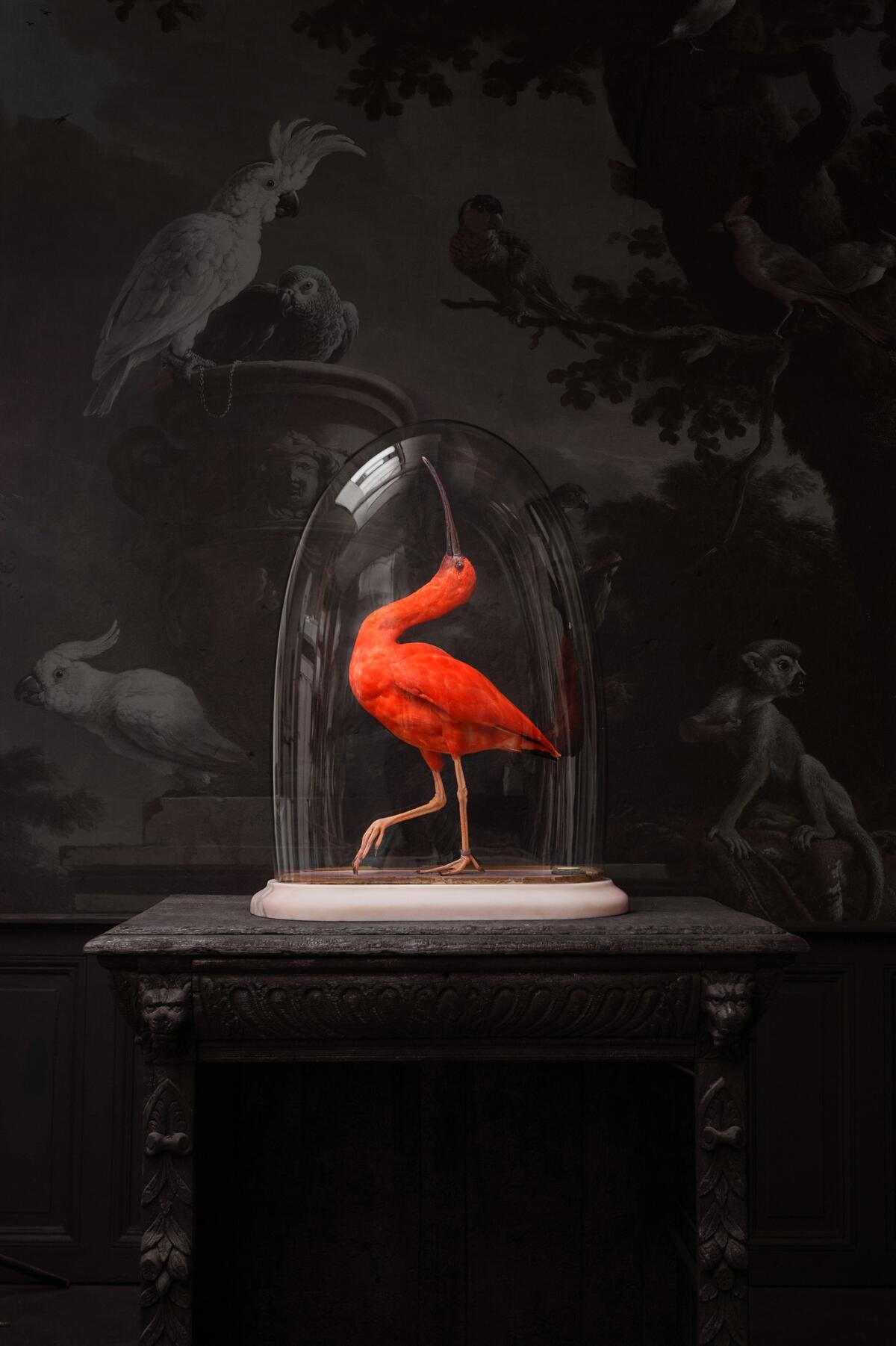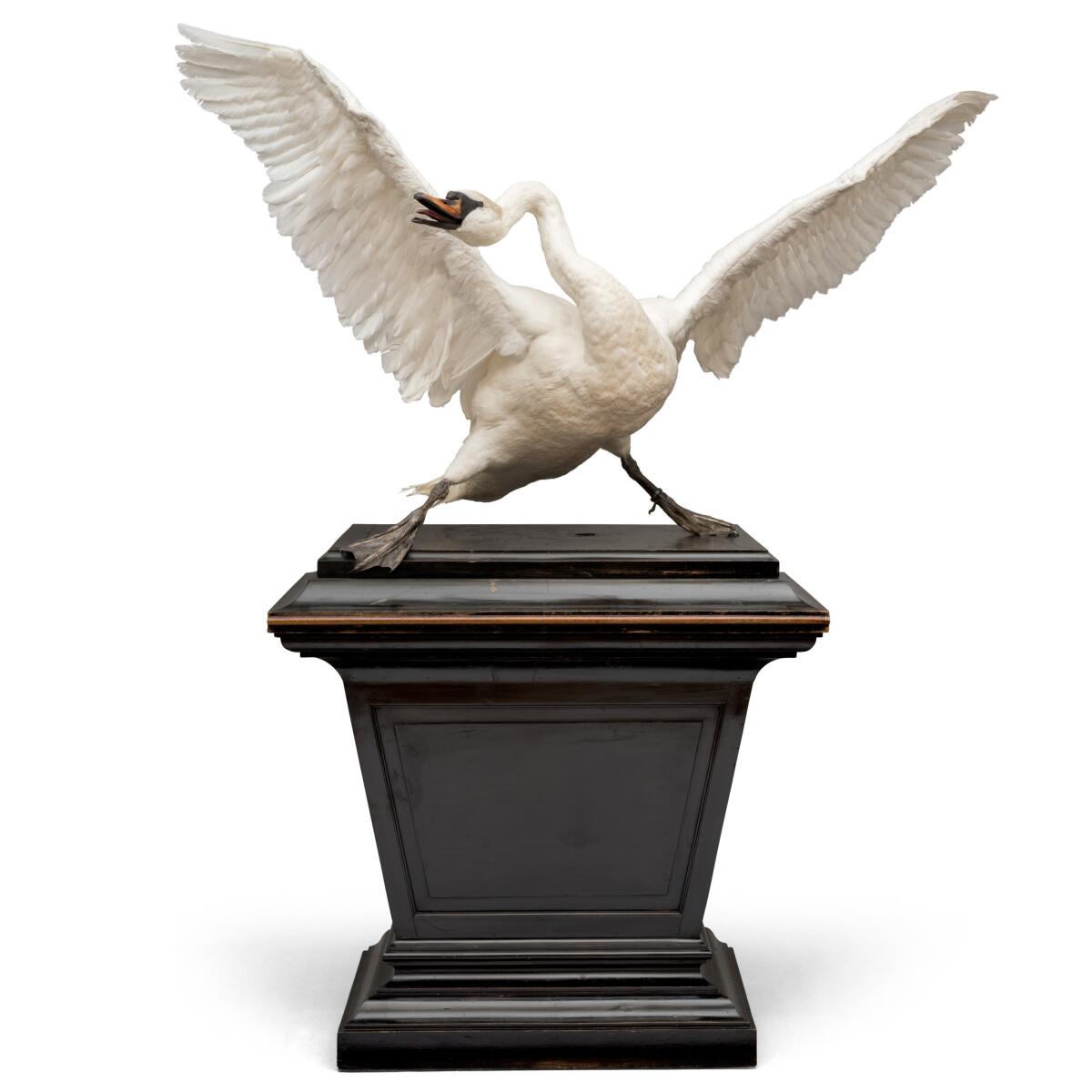Dutch taxidermy duo Jaap Sinke and Ferry van Tongeren elevate death to an art form
Death and beauty. That rarefied pairing inhabits the heart of taxidermy, the Frankensteinian art of animating carcasses for exquisite display. Dutch taxidermists Jaap Sinke and Ferry van Tongeren have further gilded the practice (en vogue during the Victorian era), becoming the darlings of interior design cognoscenti. Sensational British artist Damien Hirst — whose work often featured deceased animals — even bought the pair’s entire collection in 2015.
The artists detail their ascendancy in “Our First Book,” joined by collectors, gallerists and fashion designers (plumage reigns in taxidermy’s Wunderkammer world). Lannoo will release the 304-page gilt-edge book in late September.
In 2012, the former admen launched Darwin, Sinke and van Tongeren. The duo consider naturalist Charles Darwin to be their executive director, styling their creations after such Old Masters as Jan Asselijn, Melchior d'Hondecoeter and Jan Weenix. Occasionally, the Dutch painters’ theatrical tableaux are not merely referenced by the taxidermists; their works are completely reproduced. “Mute Swan” is an arresting real-yet-dead copy of Asselijn’s “The Threatened Swan,” 1650. The artists have also cloned Weenix’s 1716 “Dead Swan” with its strung-up leg, a wing placed faintly upon the breast and the other far extended, its final feather artfully arched.

Swans make for killer operatic display, especially dead ones (that swirled neck lolling upon the hunt table set with a Roman urn). Sinke and Van Tongeren revel in mimicking such human airs, backed by assiduous craftsmanship. Lustrous painted skins are expertly slipped over custom molds; sculpted clay outlines minute muscles. Vintage props also help. The reptile in “Green Iguana” leans from an antique column looking like a dandy out for a swell evening.
The artists don’t go as far as the Victorians’ Walter Potter, a Brit famed for cigar-smoking squirrels and a guinea pig cricket match. But their aim is the same: to drag resplendent nature indoors to hyperbolize and civilize its beauty.
“We don’t strive to copy nature faithfully, because nature is too modest in our view,” the pair writes in their book. Indeed, a kind of hubris has forever permeated taxidermy’s ancient tradition that can seem biblical in its desire for dominion.
Sinke and Van Tongeren stress that their work is “ethical taxidermy.” They rescue creatures from the trash — a salvation from a sad death that eternally beatifies bird and beast.


The biggest entertainment stories
Get our big stories about Hollywood, film, television, music, arts, culture and more right in your inbox as soon as they publish.
You may occasionally receive promotional content from the Los Angeles Times.







